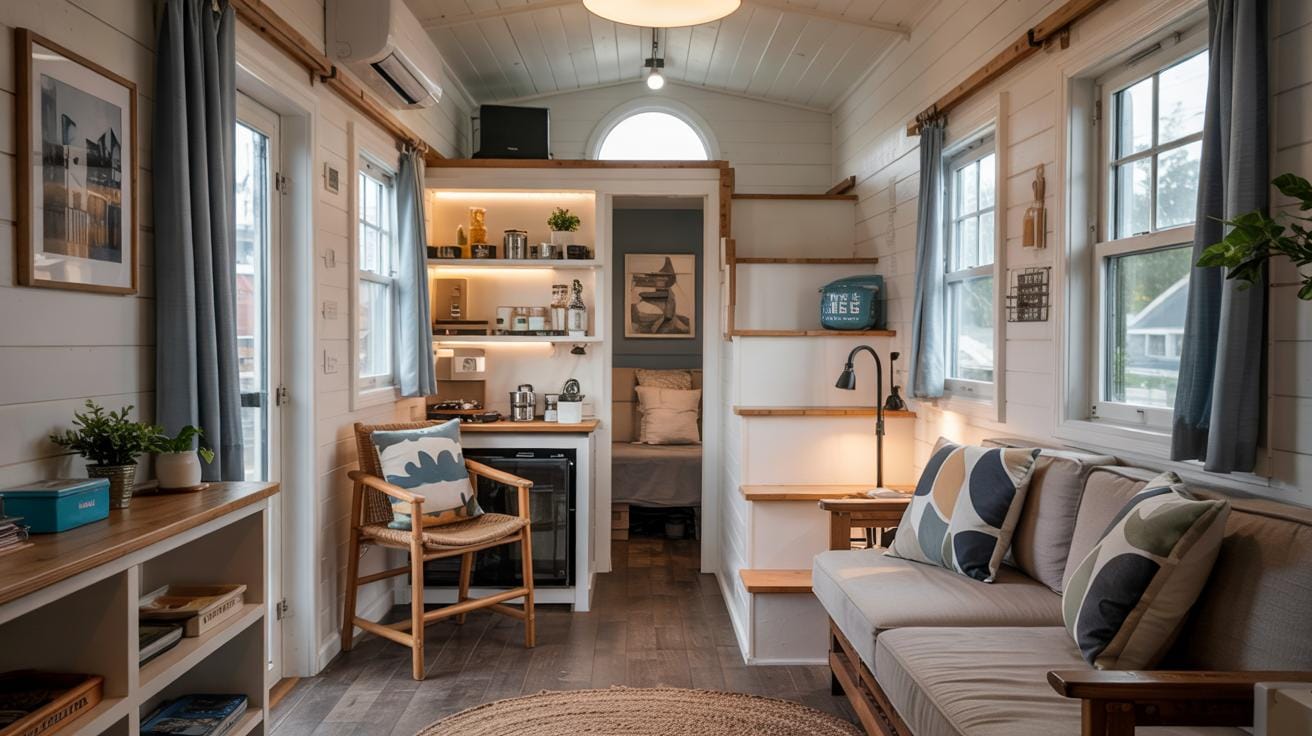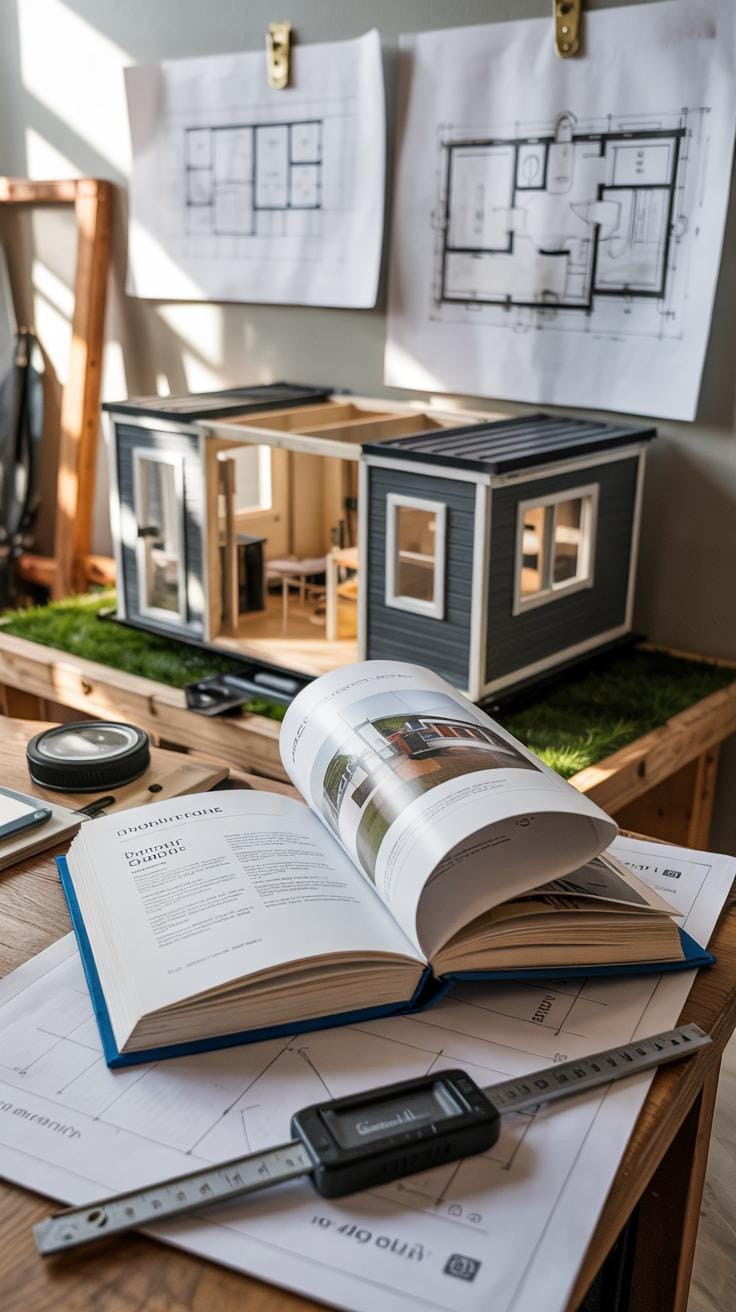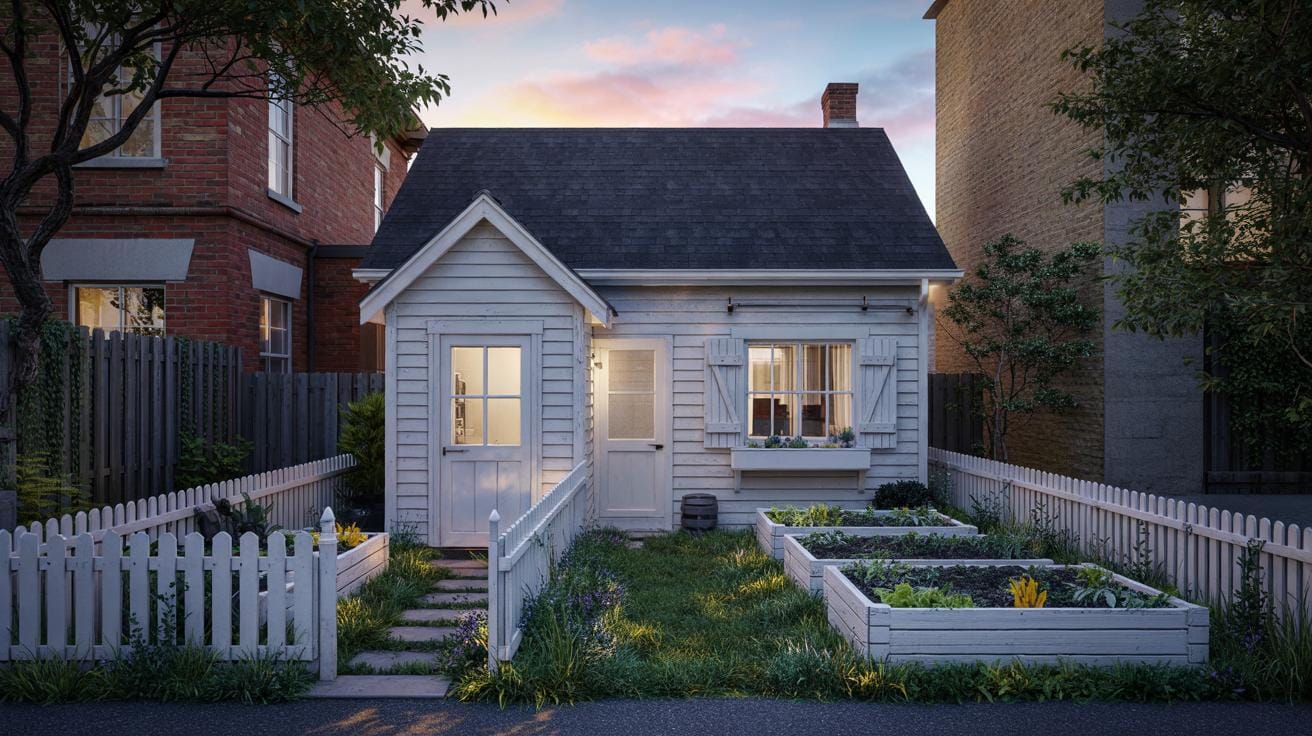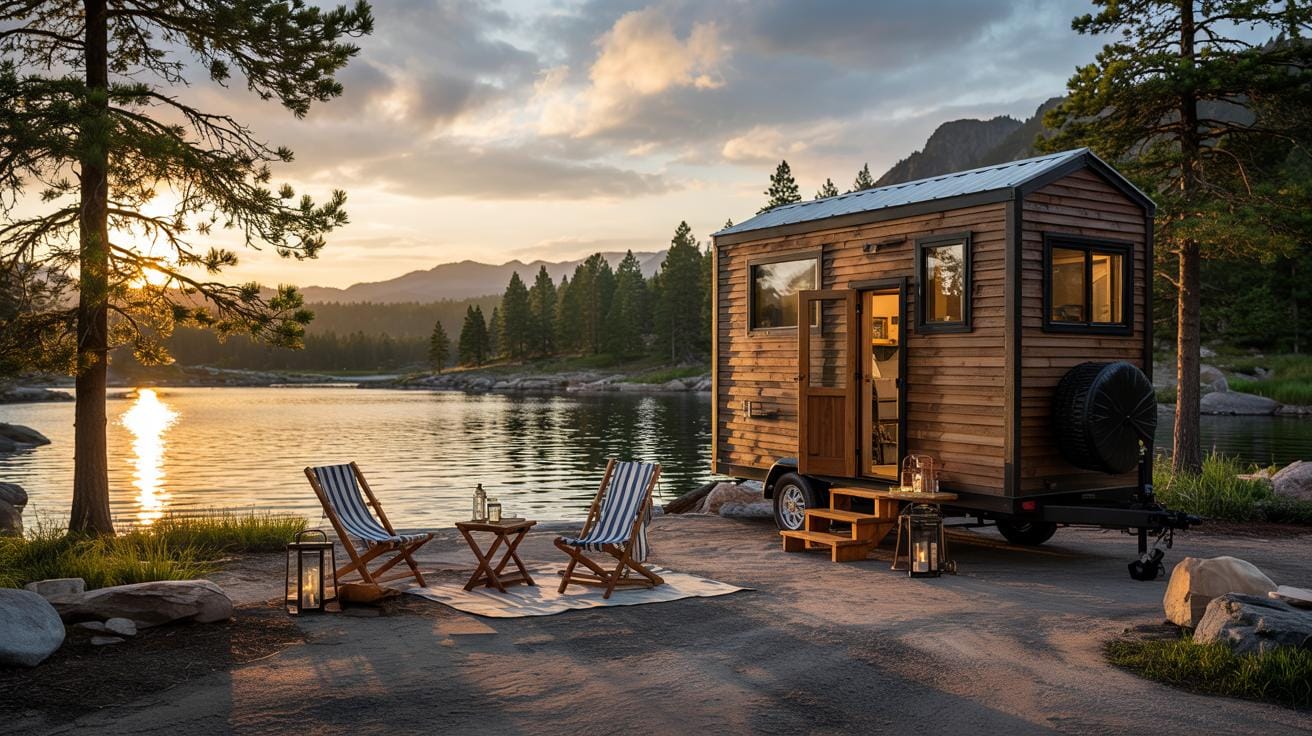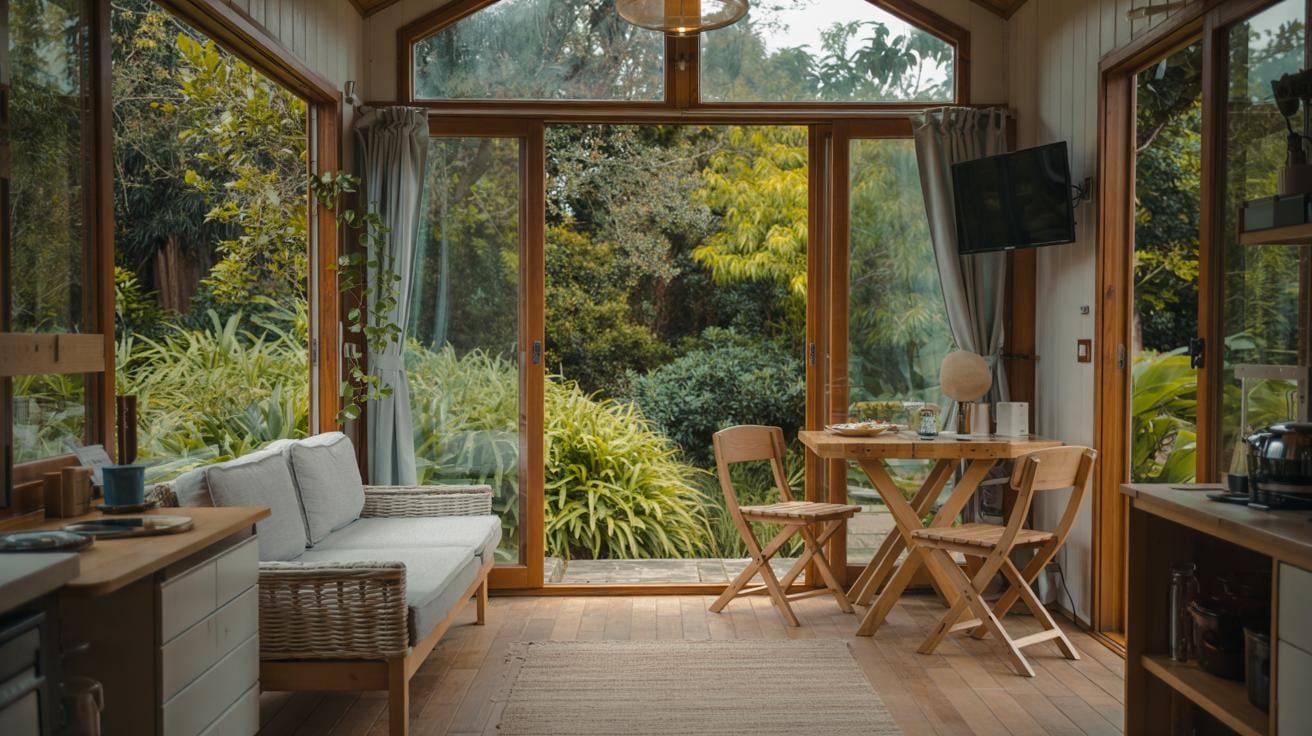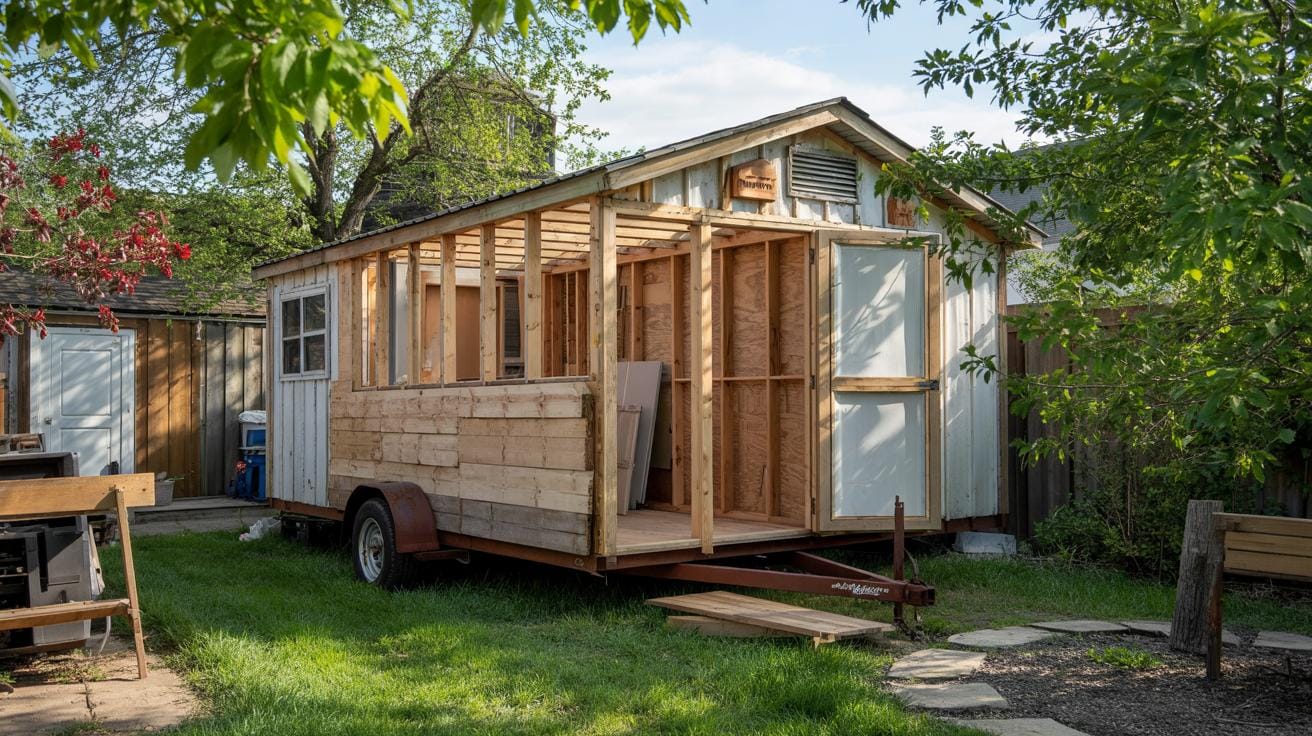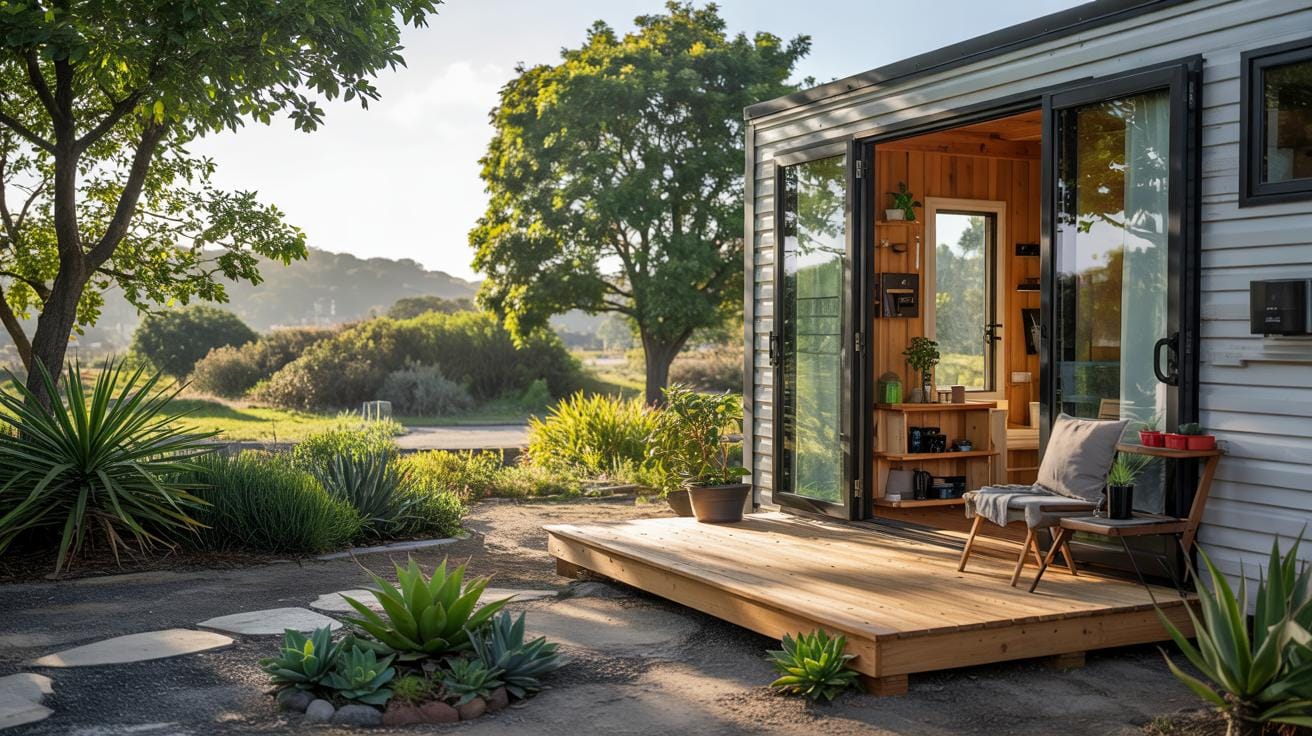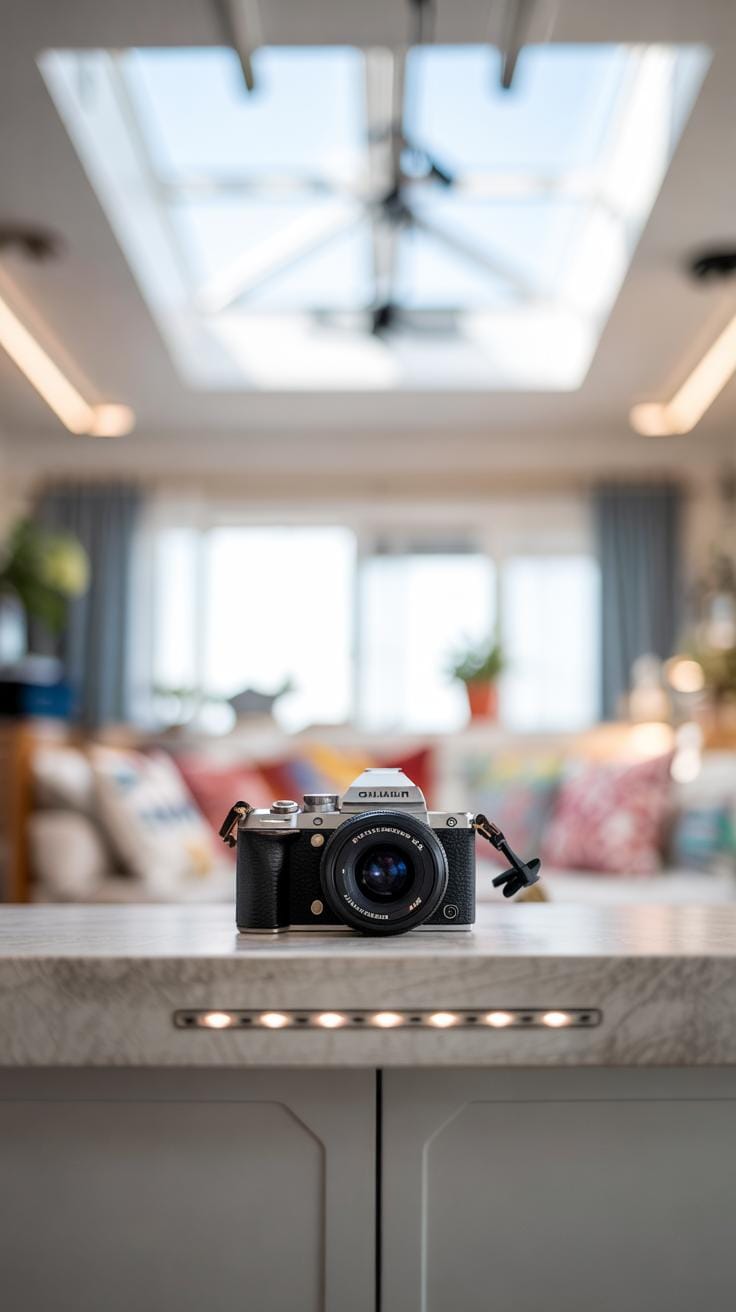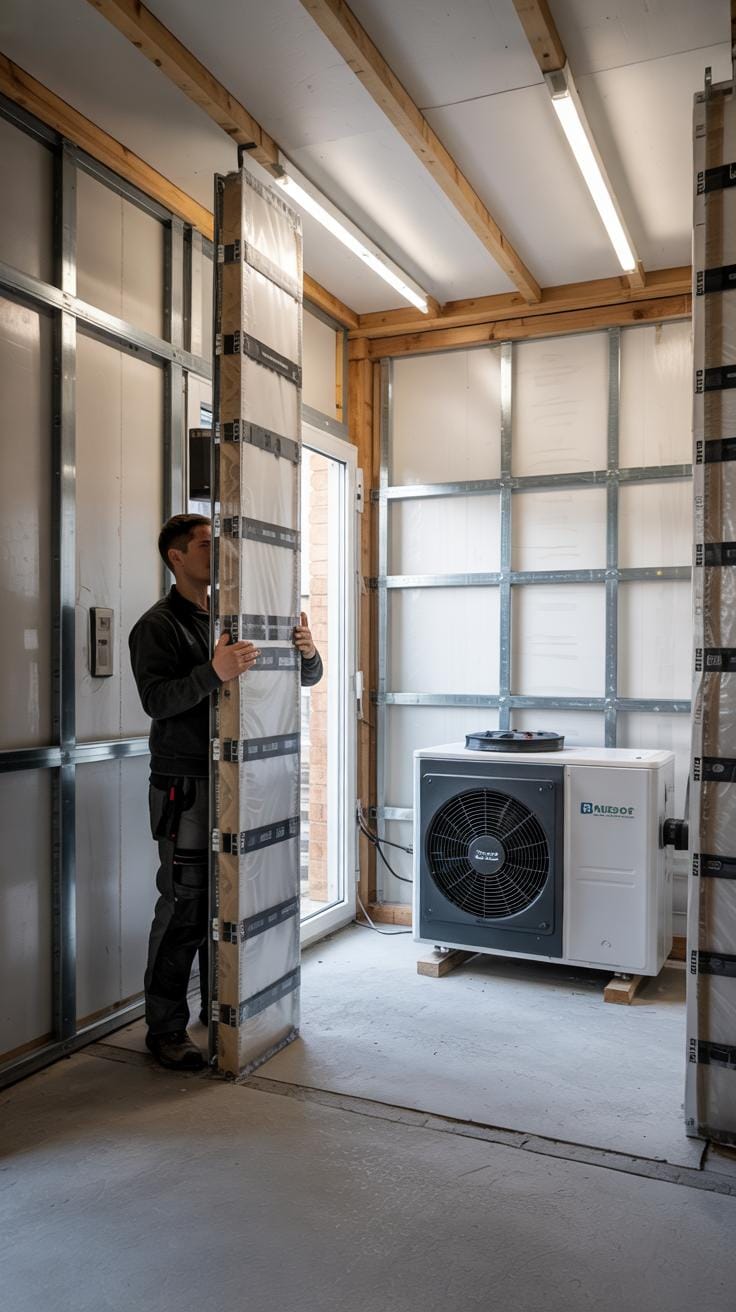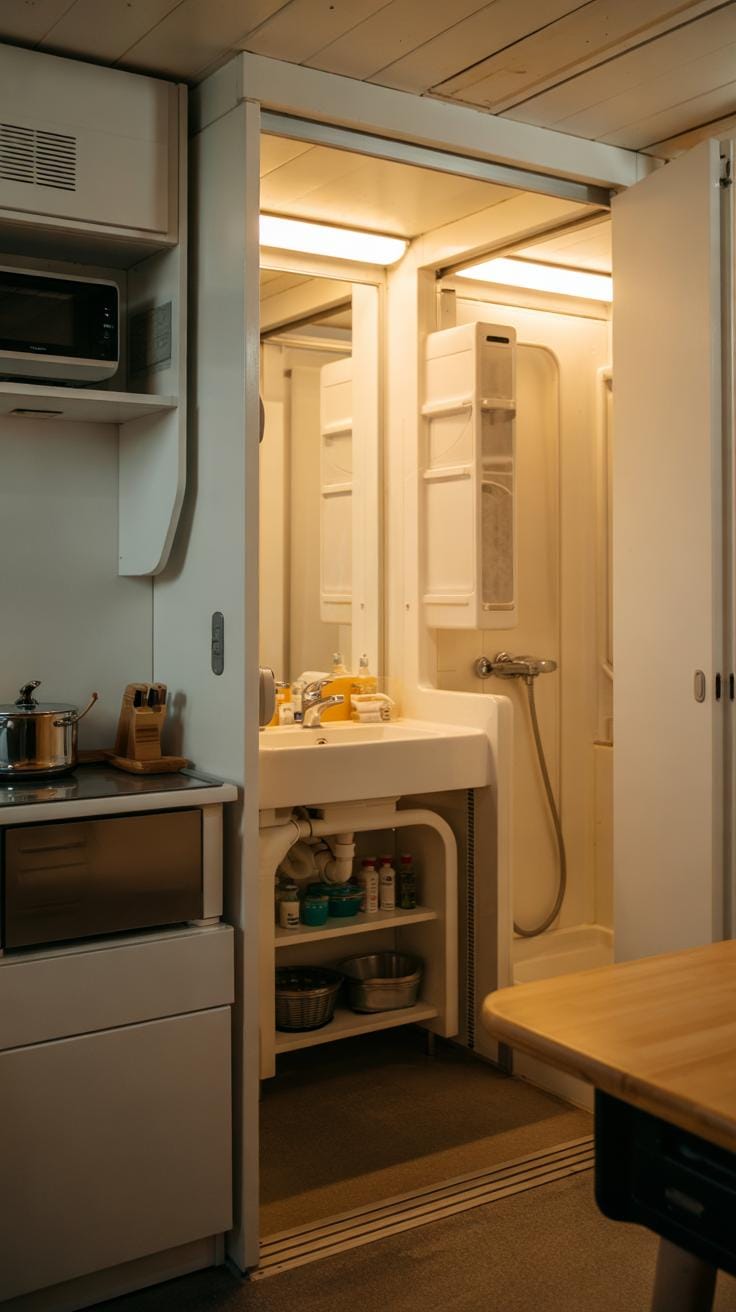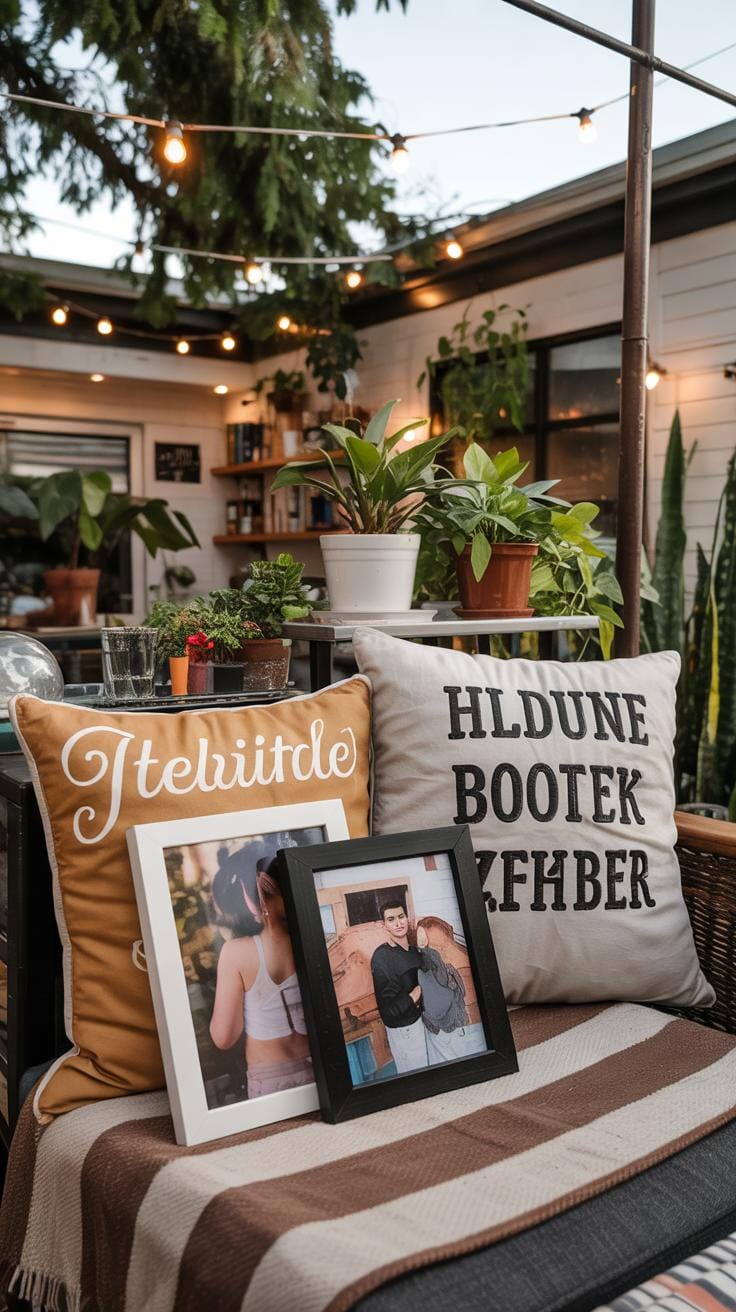Introduction
The tiny home movement invites a simpler lifestyle by focusing on living in smaller spaces that are often no larger than 400 to 600 square feet. Many individuals find comfort and freedom in downsizing their living environment. This lifestyle requires strategic planning and creativity to ensure the space remains functional and comfortable. Whether your tiny home is mobile or fixed, maximizing every inch is key to creating a livable and pleasant environment.
Renovating a tiny home offers a chance to enhance its comfort and functionality. Smart renovations involve improving insulation, adopting multifunctional furniture, optimizing lighting, and carefully planning storage. The goal is to make the space efficient without feeling cramped. This article explores practical renovation tricks to help you transform your tiny home into a cozy and comfortable haven, tailored to your daily needs.
Understanding the Basics of Tiny Homes
Defining Tiny Homes by Size and Style
Tiny homes generally fall between 100 and 400 square feet. This small size forces careful choices about which features to include. Many have essentials like a kitchen, bathroom, and sleeping area, but often leave out extra rooms to save space.
Styles vary widely. Mobile tiny homes sit on trailers, so you can move them easily. Fixed tiny homes rest on permanent foundations, offering more stability. Alternative designs like tree houses or floating homes provide unique living experiences but require special construction and maintenance.
When you look at your options, consider whether you want a travel-ready home or one that stays put. Each style changes your renovation possibilities and comfort levels in different ways.
Purpose and Popular Uses for Tiny Homes
Many people choose tiny homes to cut living costs. You use less energy, pay lower taxes, and can avoid hefty mortgage payments. Downsizing simplifies your lifestyle and lowers expenses.
Tiny homes also appeal to those wanting more freedom or a simpler life. Young adults and retirees often use them as affordable starter or retirement homes. Others repurpose them for short-term rentals or guest houses.
Special situations drive tiny home use too. Disaster relief organizations deploy mobile units quickly after storms. Some cities adopt tiny homes to provide emergency or transitional housing for homeless populations. Would your lifestyle or goals benefit from these focused uses?
Simple design and construction help keep tiny homes comfortable and sustainable. Compact layouts reduce waste and make energy-efficient upgrades easier. Understanding these basics sets you up for smart renovations that maximize your tiny home’s comfort and function.
Planning Renovations for Tiny Spaces
Planning renovations for a tiny home requires a careful look at how you currently use your space. Start by measuring key areas to understand tight spots or awkward corners. Ask yourself which parts of your home feel cramped or underused. This helps you spot where to focus your changes.
Think about the activities you want each room to support. Will the kitchen double as a workspace? Is the sleeping area just for rest, or does it also need storage? Clarity here guides smart design choices.
Always keep efficient use of space as a priority. Choose renovations that allow furniture and features to serve more than one purpose. For example, a fold-out table can save room while still offering dining or work space. This approach keeps comfort high without crowding.
Assessing Your Tiny Home’s Current Layout
Look around and decide where your tiny home falls short. Is the kitchen too small to cook comfortably? Does the bathroom feel cramped when moving? Can you access storage easily? These observations reveal pain points that lower your comfort level.
Sketch your floor plan and mark problem zones with notes on what feels difficult or inefficient. Pay attention to how natural light enters rooms too. Bright spaces often feel larger and more pleasant.
Ask where you spend most of your time and whether those areas meet your needs. Identifying these priorities helps target renovations that make the biggest impact.
Setting Priorities for Renovation Goals
After spotting your layout’s limits, decide which renovations come first. Start with improvements that boost comfort directly. For example, upgrading insulation or heating systems can make your tiny home livable year-round.
Next, focus on better storage solutions. Without enough storage, clutter builds up and shrinks usable space. Adding built-in cabinets or using under-bed drawers will free up room.
Consider upgrades to kitchen elements and water systems, such as compact sinks or efficient irrigation for any plants you keep. These help daily tasks flow smoothly.
Prioritize changes by how much they improve how you live. Ask yourself: Will this task make your tiny home feel bigger, warmer, or easier to use? Tackling those first will give you the most value.
Smart Storage Solutions for ClutterFree Living
Your tiny home needs smart storage to stay comfortable and organized. Without good storage, clutter takes over, making small spaces feel cramped and stressful. Clever storage ideas help you use every inch wisely, giving you room to move and breathe.
Built-in shelves blend into walls, holding books, kitchen supplies, or decorations without sticking out. Hidden compartments tucked under benches or floors keep valuables or seasonal items out of sight but easy to reach. Vertical storage uses your walls to stack items, freeing up floor space for daily activities.
Choose furniture that doubles as storage, like beds with drawers underneath or ottomans that open to hide blankets. Look for places often forgotten, such as space beneath stairs or above doorways, and transform them into practical storage spots. When you store things properly, you see your tiny home’s full potential.
Built-in and Hidden Storage Options
Build storage into walls using recessed shelves. These don’t stick out, so your room feels bigger. You can store books, toiletries, or kitchen items without losing floor space.
Stairs become storage units by adding drawers or cubbies behind each step. This avoids extra furniture that takes up space. Many tiny home owners use stairs this way to keep tools or clothes organized.
Furniture can hide storage too. For example, a bench with a lift-up seat stores shoes or kids’ toys. Wall beds with built-in cabinets save room and provide storage at the same time. These options let you tuck away belongings without crowding your living area.
Utilizing Vertical and Multi-Purpose Storage
Vertical shelves make use of walls that are often empty. Tall bookshelves or hanging racks keep items off the floor and within reach. You can use hooks on walls for coats, bags, or kitchen utensils.
Dual-purpose furniture adds extra function without needing more room. Tables with storage drawers, fold-down desks, or beds with shelves above help you maintain a tidy space.
Consider stacking storage bins vertically inside closets or cabinets. This stacking method increases storage capacity in narrow spaces. Using height creatively gives you more storage without sacrificing living areas.
Optimizing Lighting and Ventilation
Proper lighting and ventilation play key roles in making your tiny home feel comfortable and open. Natural light helps create a sense of space by brightening corners and reducing shadows. Placing windows strategically lets sunlight flow in during the day, making rooms appear larger and more inviting. Skylights add overhead light while saving wall space, which is precious in small homes. Choosing light paint colors for walls and ceilings reflects sunlight, boosting brightness without extra effort. How much natural light does your tiny home get, and can you increase it with a few simple changes?
Good airflow keeps your home fresh and prevents moisture buildup, which can cause musty smells or mold. Installing vents and using small fans can circulate air efficiently. Cross-ventilation, where windows open on opposite sides, helps air pass through and cools the space naturally. For artificial lighting, LED fixtures use less energy and offer various brightness levels and color temperatures. Task lighting focused on cooking or reading areas adds function without cluttering the ceiling. How can you redesign your lighting and ventilation to work together for better comfort?
Maximizing Natural Light
Windows are essential to bring daylight into your tiny home. Larger windows on the sunny side increase brightness, and slim vertical windows reduce wall space loss. Skylights offer a direct view of the sky and flood rooms with sunlight without sacrificing privacy. Reflective surfaces such as mirrors or glossy tiles bounce light deeper into the room. Choosing pale colors for walls, floors, and furnishings helps spread natural light evenly. Have you noticed how much a small window or a splash of white paint can change the mood in your space?
Improving Ventilation and Artificial Lighting
Ventilation avoids stagnant air by promoting steady airflow. Small exhaust fans in kitchens and bathrooms expel humid or smoky air outside. Ceiling fans or compact portable fans help move air within the living area without taking up much room. Energy-efficient LED bulbs replace old incandescent lights and lower your electricity use. These bulbs come in warm or cool tones to suit different tasks and create a cozy atmosphere. Could upgrading your ventilation and switching to LED lighting improve how you feel inside your tiny home?
Choosing Comfortable and Functional Furniture
You want your tiny home to feel comfortable without feeling crowded. Picking the right furniture plays a big role in making that happen. Focus on pieces that serve multiple purposes. For example, a fold-out bed lets you sleep comfortably at night and gives you more floor space during the day.
Extendable tables adjust in size, making space for meals or work, then shrink back when you need room to move. Compact seating like stools or benches can tuck away under tables or windows. Convertible furniture, such as a sofa that turns into a guest bed, adds flexibility.
How often do you find furniture that improves comfort but also frees up space? Choosing pieces like these means you won’t have to sacrifice relaxation for room. Think about your daily routines and pick furniture that supports them while fitting neatly in your tiny home.
Furniture That Saves Space
Foldable furniture helps you clear the floor in seconds. Chairs or tables that fold flat can be stored in closets or against walls when not in use. Stackable stools let you keep extra seating without cluttering the space.
Convertible pieces combine several functions. A coffee table might open up into a dining table, or an ottoman might hide storage inside. These smart designs make every inch count.
Ask yourself where you need flexibility. Can your dining table double as a workspace? Will stacking chairs work better than bulky armchairs? Furniture that adapts to your needs will save space and keep your home feeling open.
Balancing Comfort and Utility
Comfort matters even in a small space. Choose furniture with cushions or ergonomic shapes to support relaxation. Chairs and sofas with soft padding can make a huge difference after a long day.
At the same time, think about how often you use each piece. A chair that looks nice but isn’t comfy won’t get much use. A storage bench that doubles as seating can keep items organized while giving you a place to sit.
Consider fabrics that are easy to clean and durable. Your furniture should feel cozy without requiring too much maintenance.
What level of comfort do you need daily? Matching comfort with usefulness helps you create a tiny home that feels livable and practical.
Improving Insulation and Energy Efficiency
Effective Insulation Techniques
Your tiny home’s comfort depends a lot on how well it holds temperature. Insulating walls, floors, and ceilings is key to stopping heat loss or gain. Fiberglass batts work well in walls because they’re thin and fit small spaces. Spray foam insulation offers excellent air sealing and fits tight corners but costs more. Rigid foam panels add a moisture barrier and keep your floors warmer during cold months. For ceilings, using blown-in cellulose can fill gaps that are hard to reach. Think about layering different materials to get the best results. Have you checked if your tiny home has any drafts or cold spots? Sealing cracks around windows and doors will save energy too.
Energy-Saving Heating and Cooling
Maintaining a cozy temperature year-round means choosing heating and cooling systems made for small spaces. Mini-split heat pumps deliver both heating and cooling efficiently, fitting easily on a wall without taking floor space. Using thermal curtains helps block cold in winter and heat in summer, lowering your energy bills. A simple programmable thermostat lets you control temps at different times, avoiding wasted energy when you’re not home. Portable electric heaters or compact fans can also help, but aim for energy-efficient models. Think about how you use your space—could zoning your tiny home with these tools make a difference?
Maximizing Kitchen and Bathroom Efficiency
Small kitchens require smart layouts that allow easy movement and efficient storage. A galley or L-shaped design works well in tiny homes by keeping everything within reach. Choose compact appliances like a two-burner stove and a slim refrigerator to save countertop and floor space. Installing pull-out shelves and vertical storage racks helps keep utensils and ingredients organized without cluttering surfaces.
Water-saving fixtures improve bathroom comfort and reduce utility bills. Low-flow showerheads and dual-flush toilets cut water use while maintaining performance. Wall-mounted sinks and toilets free up floor space, making the room feel larger and easier to clean. Consider materials like porcelain or solid surface countertops that resist moisture and wear for long-lasting durability. These choices make daily routines smoother while supporting your home’s sustainability.
Space-Saving Kitchen Designs
Your kitchen should feel open, not cramped. Arrange elements close together but avoid blocking movement paths. Use a fold-down table or countertop extension to add work space when needed. Multi-functional appliances like a microwave-convection oven combo can handle several cooking tasks without taking extra room. Slim dishwashers under the countertop maximize space. Open shelving keeps essentials visible and accessible. How can you rearrange your kitchen to reduce steps and maximize prep area?
Compact and Functional Bathroom Upgrades
Select bathroom fixtures that balance comfort and size. Corner sinks and compact vanities provide room for storage without consuming floor space. Sliding doors rather than swinging ones prevent hallway obstruction. Install mirrored cabinets to combine reflection and storage needs. Heated towel racks and exhaust fans improve hygiene and comfort. Think about choosing finishes and fixtures that withstand moisture while making cleaning easier. How can you design your bathroom to feel larger and more inviting without adding square footage?
Personalizing Your Tiny Home for Lasting Comfort
Your tiny home should feel like a true reflection of who you are. Adding personal touches doesn’t just make it warmer; it creates a space that fits your daily life.
Think about what makes you comfortable. Maybe you enjoy reading with cozy blankets or prefer a minimalist look with clean lines. Choose textiles, colors, and decor that match your routine and personality.
Practicality matters, too. Use items that serve more than one purpose, like a throw pillow that doubles as a backrest or a basket that stores extra blankets. Every piece should add to your comfort without crowding the space.
What objects or colors remind you of home? Bringing these elements inside helps you relax and feel connected to your surroundings.
Creating this balance between function and style will keep your tiny home welcoming for years.
Adding Warmth with Textiles and Color
Simple changes can bring warmth to your tiny home. Cushions with varied textures offer comfort and add color without taking up floor space. A small, soft rug can make wood or tile floors feel less cold and connect areas visually.
Choose a color scheme that suits your mood. Warm tones like soft reds or earthy browns create coziness, while cool shades like blues or greens can promote calmness. Stick to two or three main colors to prevent visual clutter.
Swap out textiles seasonally to refresh your space easily. Cotton and linen are great for warm months, while wool or fleece works well in winter.
Are your current textiles making you feel relaxed? Try adding new throw pillows or a cozy blanket tailored to your taste and notice how it changes your room’s feel.
Decor and Lighting to Reflect Your Style
Lighting affects both function and mood. Flexible lighting options, like dimmers or adjustable lamps, let you set the right atmosphere for work or relaxation. Choose fixtures that match your style—industrial, vintage, or modern—without crowding the space.
Decorate with items that tell your story. Display artwork, photos, or souvenirs that remind you of good times or important values. Keep displays organized to avoid clutter.
Small plants can add freshness and life to your home while improving air quality. Pick low-maintenance species if you prefer easy care.
Think about how lighting and decor make you feel. Are there pieces you don’t connect with? Keep only what supports your comfort and style to make your tiny home a true personal retreat.
Conclusions
Your tiny home can become a highly comfortable living space when thoughtfully renovated. Focusing on space optimization, using multifunctional designs, and improving insulation contribute significantly to comfort. Simple changes like better lighting and smart storage solutions create a more organized and welcoming environment. Every improvement maximizes your limited space while making daily living easier and more enjoyable.
Consider your lifestyle and needs when planning renovations. Prioritize enhancements that boost comfort and functionality. By adopting these practical strategies, your tiny home can meet your expectations for a cozy and efficient living space. With careful design and renovation, you can enjoy the benefits of tiny home living without sacrificing comfort.

